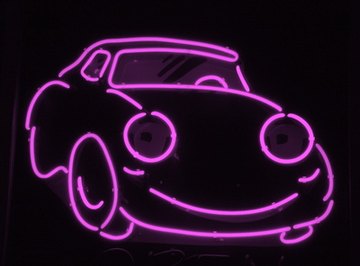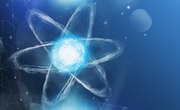
One of the best ways to have students focus in a science is to design interesting experiments and activities. Using neon and atoms as part of science activities will engage the students and at the same time teach them about atoms. Neon is a rare element with the symbol Ne. This is an interesting element because it shows some very unusual chemistry. It is an inert gas in normal circumstances but glows when present in discharge tubes and neon lamps.
Neon Atom Model
This particular activity involves making model of a neon atom and can be done by students from college to middle school levels. The students would use foam for the particles in the atom and use skewer sticks and glue to connect them. Obviously, the students would need a model or a diagram of an atom to see how many electrons, protons, and neutrons there are, and where to place them. This will teach students about subatomic particles and how the center of mass is concentrated on the nucleus and the rest of the atom is mostly empty air, except for electrons.
Neon Light Creation
Creation of neon lights is another interesting project more suited for slightly mature students. The students would be presented with a glass, discharge tube with electrodes inside. Then they would need to fill the tubes with low-pressure neon gas. Finally, they will pass an electric current through it, making it light up. They will also learn about ionizing atoms, photons, and also about orbital levels. They will learn what an ion is and how an atom is ionized, because the discharge tube ionizes the atom. They will learn about photons and orbital levels as a photon is produced when an electron is excited to a higher level and goes back. This activity would be espeially useful as an introduction to photons, ions and other such atom lessons.
Neon and Isotopes
This activity teaches students about isotopes using neon atoms. Isotopes are atoms of an element which have a different number of neutrons and hence higher atomic mass. In this activity, streams of neon ions are channeled through magnetic and electric fields and their deflection tested on a photographic plate. The presence of two different patches of light leads to the conclusion that some of the neon atoms have higher masses than others. There are three ways this experiment could be useful. First, it teaches students about a mass spectrometer since this set up is a crude version of one. Second, it teaches students about isotopes and how they are identified. Third, it introduces students to canal rays and their history. This experiment was originally done by J.J. Thomson, a researcher on canal rays. Studies on canal rays led to the discovery of mass spectrometry.
References
- Neon: A Brief History; Aja Magnum; 2007
- Flash of the Cathode Rays: A History of J. J. Thomson's Electron; Per F. Dahl; 1997
About the Author
Parul Khare is a Ph.D. in biochemistry. She wrote lifestyle articles for a Malaysian e-zine, Asianexec.com before enrolling in graduate school. She has also written travel articles for Essortment.com. Now she would like write on more diverse subjects, including science, cooking, gardening, fitness, relationships and, of course, lifestyle.
Photo Credits
light purple neon car image by Tammy Mobley from Fotolia.com
